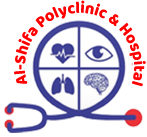Cancer that starts in the cells that make up the bones is called bone cancer. There are two principal forms of bone cancer: primary bone cancer, which originates in the bones, and secondary bone cancer, which spreads from other regions of the body to the bones.
Stages
The size and spread of the tumour determine the stage of bone cancer:
- Stage I: Localised and low-grade cancer.
- Stage II: Although still localised, the cancer is high grade.
- Stage III: Many tumours within a single bone.
- Stage IV: The cancer has metastasized, or spread to other bodily parts.
Primary Bone Cancer
Unlike secondary bone cancer, which spreads to the bones from other regions of the body, primary bone cancer starts in the cells that make up the bones. Compared to other cancers, primary bone cancer is rather uncommon.
Types of Primary Bone Cancer
Osteosarcoma
- Description: This is the most prevalent kind of primary bone cancer, usually affecting young adults and children.
- Typical Places: Usually begins in the long bones, especially the knee area, of the arms and legs.
- Symptoms: Symptoms include swelling, potential fractures, and pain in the afflicted bone.
Chondrosarcoma
- Description: Cartilage cells are the source of cancer.
- Typical Locations: Shoulders, thighs, and pelvis; more prevalent in adults.
- Symptoms: Pain, swelling, and maybe a lump or tumour in the afflicted location are the symptoms.
Ewing Sarcoma
- Description: May begin in the soft tissues or bones and affect children and teenagers.
- Common Locations: The lower leg, thigh, and pelvis are common places to find it.
- Symptoms: Pain, edoema, fever, and weight loss are the symptoms.
Malignant Fibrous Histiocytoma and Fibrosarcoma
- Description: Seldom occurring malignancies affecting the bone’s fibrous tissue.
- Prevalent Locations: More prevalent in adulthood, usually in the soft tissues around the bones.
- Symptoms: Pain, edoema, and maybe a lump or tumour are the symptoms.
Chordoma
- Description: An uncommon malignancy that typically affects the base of the skull and the spine.
- Frequently Found Places: Base of the skull and spine.
- Symptoms: Pain and neurological symptoms brought on by pressure on the spinal cord or nerves are the symptoms.
Risk Factors
- Genetic Factors: Hereditary retinoblastoma and Li-Fraumeni syndrome are two examples of genetic disorders that raise the risk.
- Prior Radiation Therapy: History of heavy radiation exposure, particularly in childhood.
- Bone Diseases: Predisposing factors include Paget’s disease of the bone.
Common Symptoms of Bone Cancer
- Pain: A persistent, escalating bone ache.
- Tenderness and Swelling: Swelling in the area that is impacted.
- Fractures: Bones that have weakened can break.
- Fever, exhaustion, and weight loss: Other symptoms.
Diagnosis
- Imaging tests: X-rays, CT scans, MRIs, and bone scans to find abnormalities in the bones.
- Biopsy: A sample of the bone tissue is removed and inspected under a microscope to determine whether cancer cells are present.
- Blood tests: To look for potential indicators of bone cancer.
- X-Rays: These display the size of tumours.
- CT scans: X-rays are used by a computer to create images with more detail.
- MRI: These display inside body parts using a powerful magnet.
- PET scans: Radioactive glucose is injected into the vein, and a scanner identifies cancer cells because they use more glucose than healthy cells do.
- Bone scans: A radioactive substance is injected into the vein and gathers in the bones, visible to a scanner.
- Biopsy: A process used to confirm a diagnosis by removing a sample of the tumour for microscopic examination.
Treatment Options
Surgery
- Tumour Removal: Removing the tumour along with the surrounding bone.
- Amputation: In extreme circumstances or surgery to spare limbs.
Chemotherapy
- Drug-Assisted Cancer Cell Death: Frequently used to reduce tumour size before surgery or to eradicate any leftover cells.
Radiation Treatment
- High-Energy Beams: To specifically target and kill cancer cells, used to treat symptoms or in situations where surgery is not an option.
Personalised Medicine
- Targeted Medications: Medications that target anomalies particular to cancer cells with fewer adverse effects than conventional treatment.
Follow-Up and Rehabilitation
- Frequent Monitoring: Blood tests and imaging to look for recurrence.
- Physical Therapy: To recover mobility and strength, particularly following surgery.
- Psychosocial Support: Groups and counselling to assist in dealing with the psychological effects of cancer.
A multidisciplinary strategy combining oncologists, orthopaedic surgeons, radiologists, and support care workers is necessary for effective therapy and management.
Conclusion
There are primary and secondary kinds of bone cancer, which start in the cells that make up the bones. Primary bone cancer is a relatively uncommon disease that can have many characteristics, common locations, and symptoms. Examples of these cancers are osteosarcoma, chondrosarcoma, Ewing sarcoma, fibrosarcoma, and chordoma. The stage of the disease ranges from localised low-grade tumours to metastasized malignancy. Early identification, a precise diagnosis, a multidisciplinary strategy involving different healthcare specialists, as well as ongoing follow-up and rehabilitation to optimise patient outcomes, are necessary for effective therapy of bone cancer.
